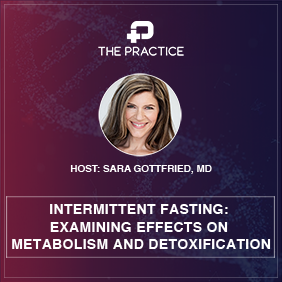
by Bianca Garilli, ND
Strokes are responsible for 1 out of every 20 deaths in the US – that’s ~ 140,000 Americans’ lives lost each year.1 Stroke is also a leading cause of serious, long-term disability.2 Diabetes mellitus is an independent risk factor for ischemic stroke, a form of stroke caused by inadequate blood supply (and therefore insufficient oxygen and nutrients) to a particular area of the brain. Ischemic strokes account for the majority of strokes (87%) in the US.2
Another subtype of stroke, intracerebral hemorrhage (ICH), results from blood pooling within the brain cavity after the rupture of a blood vessel within the brain parenchyma.3 ICH is the second most common stroke subtype, responsible for 10-20% of strokes worldwide.4 The relationship between blood glucose levels, diabetes and ICH is not well-established, and previous studies have netted inconsistent findings.5
A 2018 study5 published in Stroke examined 96,110 participants from the Kailuan community, Tangshan City, China to estimate the impact of long-term fasting blood glucose concentrations on subsequent risk of ICH. The participants were free from cardiovascular disease and cancer at the 2006 baseline time point, and fasting blood glucose concentrations were measured at 2-year intervals (2006, 2008, 2010 and 2012). Medical records were reviewed to confirm ICH incidence from 2006–2015.5
When compared to a normal fasting blood glucose (72-100 mg/dL), there was an adjusted hazard ratio for ICH of:5
- 1.59 (i.e. 59% increased risk for ICH) in individuals with diabetes mellitus or a fasting blood glucose >126 mg/dL (HbA1c: ~6%)
- 1.31 (i.e. 31% increased risk for ICH) in individuals with prediabetes with a fasting blood glucose 110-125 mg/dL (HbA1c: ~5.5-6%)
- 0.98 (not statistically significant) in individuals with prediabetes with a fasting blood glucose 101-109 mg/dL (HbA1c: ~4-5.5%)
- 2.04 (not statistically significant) for individuals with hypoglycemia, fasting blood glucose <72 mg/dL (HbA1c: ~<4%)6-7
The authors of the study concluded that both low and high fasting blood glucose concentrations were associated with a higher risk of ICH when compared to fasting blood glucose concentrations between 72-100 mg/dL (HbA1c: ~ 4-5.5%).5 The highest statistical significance for this increased risk of ICH was observed for fasting blood glucose levels ≥ 110 mg/dL (i.e. prediabetes and diabetes). This study underscores the importance of clinicians helping patients achieve long-term control of fasting blood glucose maintaining levels, so they are neither too high nor too low, to mitigate the risk of ICH.
Why is this Clinically Relevant?
- Routine monitoring of fasting blood glucose levels is important for assessing risk of ICH
- ICH risk can be reduced by maintaining a fasting blood glucose between 72-100 mg/dL or HbA1c between 4-5.5%
- Lifestyle changes including adherence to a low-glycemic, high-fiber diet and routine physical activity are steps which may support a healthy fasting blood glucose level in the long term
- Fasting blood glucose levels outside of the 72-100 mg/dL range should be targeted through lifestyle modifications, nutraceutical supplementation and blood sugar-regulating medications as needed
Citations
- Vital Signs: Recent trends in stroke death rates – United States, 2000-2015. MMWR 2017;66.
- Benjamin EJ, Blaha MJ, Chiuve SE, et al. on behalf of the American Heart Association Statistics Committee and Stroke Statistics Subcommittee. Heart disease and stroke statistics—2017 update: a report from the American Heart Association. Circulation. 2017;135:e229-e445.
- Up To Date. Etiology, classification and epidemiology of stroke. https://www.uptodate.com/contents/etiology-classification-and-epidemiology-of-stroke. Accessed March 13, 2018.
- Feigin VL, Lawes CM, Bennett DA, Barker-Collo SL, Parag V. Worldwide stroke incidence and early case fatality reported in 56 population-based studies: a systematic review. Lancet Neurol. 2009;8:355–369.
- Jin C, Li G, Rexrode KM, et al. Prospective study of fasting blood glucose and intracerebral hemorrhagic risk. Stroke. 2018;49:27-33.
- Mayo Clinic. A1C equivalents. https://www.mayoclinic.org/tests-procedures/a1c-test/about/pac-20384643. Accessed March 13, 2018.
- Diabetes Daily. Conversion Calculator. https://www.diabetesdaily.com/calculator/. Accessed March 13, 2018.





